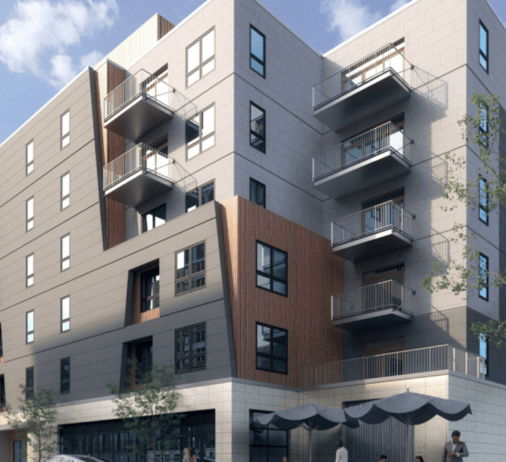The Impact of the Fed's Rate Cut on Boston’s Multifamily Market
The Federal Reserve has just cut interest rates by 50 basis points, bringing the target federal funds rate down to 4.75% to 5.25%—marking the first cut in over four years. For multifamily real estate developers in Boston, this is a a pretty big deal. With borrowing costs now significantly lower, developers in the Boston submarket stand to benefit, but the road ahead is full of both opportunities and challenges.
Let’s break down what this means for Boston’s multifamily market and how Boston real estate developers can make the most of these changing conditions.
Lower Borrowing Costs: A Boost for Boston Developers
Boston has long been known for its competitive and high-cost real estate market. The immediate impact of the Fed’s rate cut is the reduction in borrowing costs, which provides much-needed relief. For developers facing the challenge of thin margins in Boston’s core neighborhoods—where land and construction costs are already high—the lower rates could help projects pencil out more easily.
Developers with loans locked in at higher interest rates now have a prime opportunity to refinance. By lowering monthly debt payments, developers can free up cash flow to reinvest in Boston’s ever-evolving neighborhoods, whether that means upgrading amenities in Back Bay or exploring new developments in up-and-coming areas like Dorchester or East Boston. The lower borrowing costs extend financial runways for projects, allowing developers to consider expanding their portfolios in an environment where the barriers to entry have traditionally been steep.
However, this isn’t the time to rest easy. The Fed’s projections indicate more rate cuts may be on the horizon through 2024 and 2025, with a potential total reduction of up to 1.75% over the next two years. Boston developers should take advantage of today’s lower rates but remain cautious of the market's fluid nature, factoring potential economic shifts into their long-term planning.
Inflation, Construction Costs, and Boston’s Rental Demand
While the reduction in rates is good news, Boston’s multifamily developers must navigate the complex macroeconomic environment. Inflation is easing, but the job market is softening, and unemployment may rise. In a market like Boston, where luxury apartments are prominent, this could affect demand. Potential renters may become more budget-conscious, opting for more affordable options in neighborhoods like Brighton or Somerville rather than high-end rentals downtown.
The potential silver lining for developers is that as inflation stabilizes, construction costs may come down. For those building in the pricey Boston market, this is critical. Over the past two years, rising material and labor costs, coupled with high financing expenses, have put pressure on profit margins. If inflation continues to ease, new builds and renovations in areas like Seaport or Cambridge may become more financially viable, helping developers reclaim some margin while still delivering high-quality units.
With Boston’s rental demand still relatively strong due to its robust educational and healthcare sectors, developers should focus on areas with solid job growth and population influx. Neighborhoods near key employment hubs, like the Longwood Medical Area or tech-heavy Kendall Square, should remain high priorities.
Seizing the Moment
While lower interest rates make financing easier, Boston is a notoriously competitive market. More developers will likely enter the multifamily space, making it even more important to stand out. Simply offering “luxury” won’t cut it in a city where every other development makes similar claims. Boston renters, particularly in neighborhoods like South End or Fenway, demand more than just premium finishes—they want branded residences, unique experiences, community-driven amenities, and sustainability.
Developers who position their properties with a distinct value proposition—whether it's through cutting-edge sustainability features in Allston or creating mixed-use developments that reflect the historical beauty of Beacon Hill—will be better positioned to thrive. As the competition heats up, it’s essential to focus on more than just cost-cutting; the long-term value of differentiation cannot be understated.
This rate cut also presents an opportunity for Boston developers to diversify portfolios. Previously high-risk areas, might now be worth exploring. With lower borrowing costs, expanding into mixed-use developments that combine retail and residential or incorporating industrial-to-residential conversions could open new avenues for growth.
Staying Disciplined in a Changing Market
While this rate cut offers substantial opportunities, Boston developers must approach the evolving market with discipline. The temptation to take on more projects in high-demand areas like the North End is strong, but overleveraging in a market that remains somewhat unpredictable could lead to trouble down the road.
A balanced approach is critical. Focus on maintaining financial flexibility, keeping debt manageable, and selecting projects with both short-term and long-term potential. Developers should continue to pay attention to market dynamics, particularly in neighborhoods outside the city’s core where demand has been growing, like Jamaica Plain or Hyde Park.
Positioning Boston’s Future Pipeline for Long-Term Growth
The Federal Reserve’s rate cut gives Boston’s multifamily developers a significant opportunity to expand, refinance, and take on new projects. However, as the market evolves, competition will only intensify. Now is the time for developers to think strategically about how to leverage these conditions in a city where real estate success demands creativity and precision.
By paying close attention to Boston’s unique market dynamics, adopting a differentiated approach, and staying disciplined in their financial planning, developers can seize this moment and position themselves for long-term success. The opportunities are clear, but it’s the developers who make the right moves today who will come out on top in Boston’s competitive multifamily landscape.

